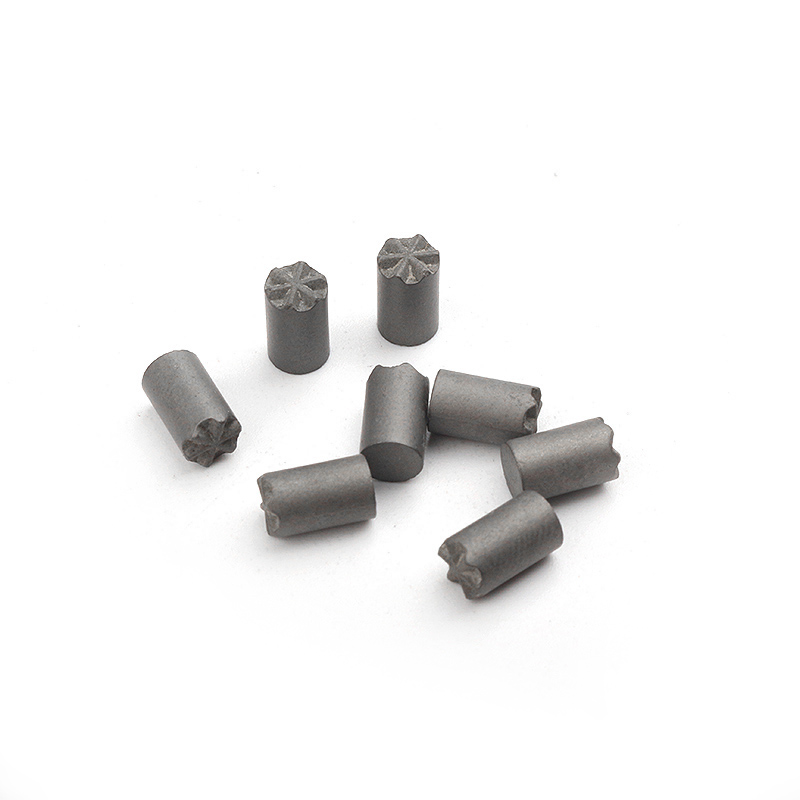2025-05-16
In recent years, the global oil and gas industry has witnessed a notable transformation in drilling technologies, with a marked shift towards advanced, high-performance solutions. Among these innovations, the Cemented Drill Bit has emerged as a crucial component driving increased efficiency, durability, and performance in challenging environments. With exploration activities expanding into deeper and harsher terrains, the adoption of Cemented Drill Bit solutions is accelerating across key energy-producing regions.
The Cemented Drill Bit refers to a specialized drilling tool manufactured using tungsten carbide particles bound with metallic binders. This fusion results in an ultra-hard cutting surface capable of withstanding high temperatures and abrasive rock formations. These bits are especially valued in horizontal drilling and deep-well operations where traditional bits often fail due to excessive wear or breakage.
According to the latest industry data, the global Cemented Drill Bit market is projected to grow at a compound annual growth rate (CAGR) of 6.4% through 2030. This growth is being fueled by increasing upstream oil and gas investments, particularly in North America, the Middle East, and parts of Asia-Pacific. Operators are prioritizing tools that reduce non-productive time (NPT) and total drilling costs—making the Cemented Drill Bit a preferred choice in both conventional and unconventional projects.

Technological improvements have further enhanced the capabilities of the Cemented Drill Bit. Modern manufacturing techniques such as 3D printing and computer numerical control (CNC) machining are allowing for precise geometries and customized cutter placements. This not only improves penetration rates but also optimizes weight-on-bit and torque management, resulting in smoother operations. As a result, service providers are now offering bespoke Cemented Drill Bit designs tailored to specific basin requirements.
The environmental aspect is another driving force behind the increasing demand for Cemented Drill Bit technology. With global attention turning toward sustainability and carbon footprint reduction, drillers are under pressure to achieve more with fewer resources. Since the Cemented Drill Bit lasts longer and requires fewer replacements compared to traditional bits, it contributes to waste reduction and lower emissions—aligning well with industry-wide green initiatives.
From a supply chain perspective, the production of Cemented Drill Bit technology remains largely dominated by a few major players, but competition is intensifying. Manufacturers in China and India are expanding their capacities, offering cost-effective yet high-quality products that meet international standards. Meanwhile, established brands in the United States and Europe are focusing on R&D and strategic partnerships to retain market share.
One notable trend is the integration of real-time data analytics into drilling operations using Cemented Drill Bit tools. Equipped with smart sensors and digital tracking capabilities, some advanced models provide feedback on pressure, temperature, and vibration levels, enabling predictive maintenance and minimizing downtime. This convergence of mechanical engineering and digital technology is expected to shape the future of drilling operations.
End-users in geothermal energy are also recognizing the value of the Cemented Drill Bit. Geothermal wells often require deep, hot, and abrasive drilling, and these bits have proven to be highly effective in such conditions. As countries diversify their energy portfolios and explore sustainable alternatives, the application scope of the Cemented Drill Bit is broadening beyond oil and gas.
Furthermore, the offshore drilling sector—particularly in ultra-deepwater projects—is experiencing renewed activity. Here, the reliability and longevity of the Cemented Drill Bit provide a strategic advantage. Offshore rigs often operate far from logistical hubs, and bit failure can to costly delays. By reducing the frequency of bit changes, operators can save millions of dollars annually, reinforcing the commercial value of these robust drilling tools.
Looking ahead, the Cemented Drill Bit industry is expected to continue its upward trajectory, bolstered by new material science breakthroughs and increasing digitization. Stakeholders are investing heavily in innovation, aiming to develop bits that are lighter, stronger, and smarter. Collaborative ventures between oilfield service companies and academic institutions are also underway, focused on enhancing wear resistance and thermal stability.